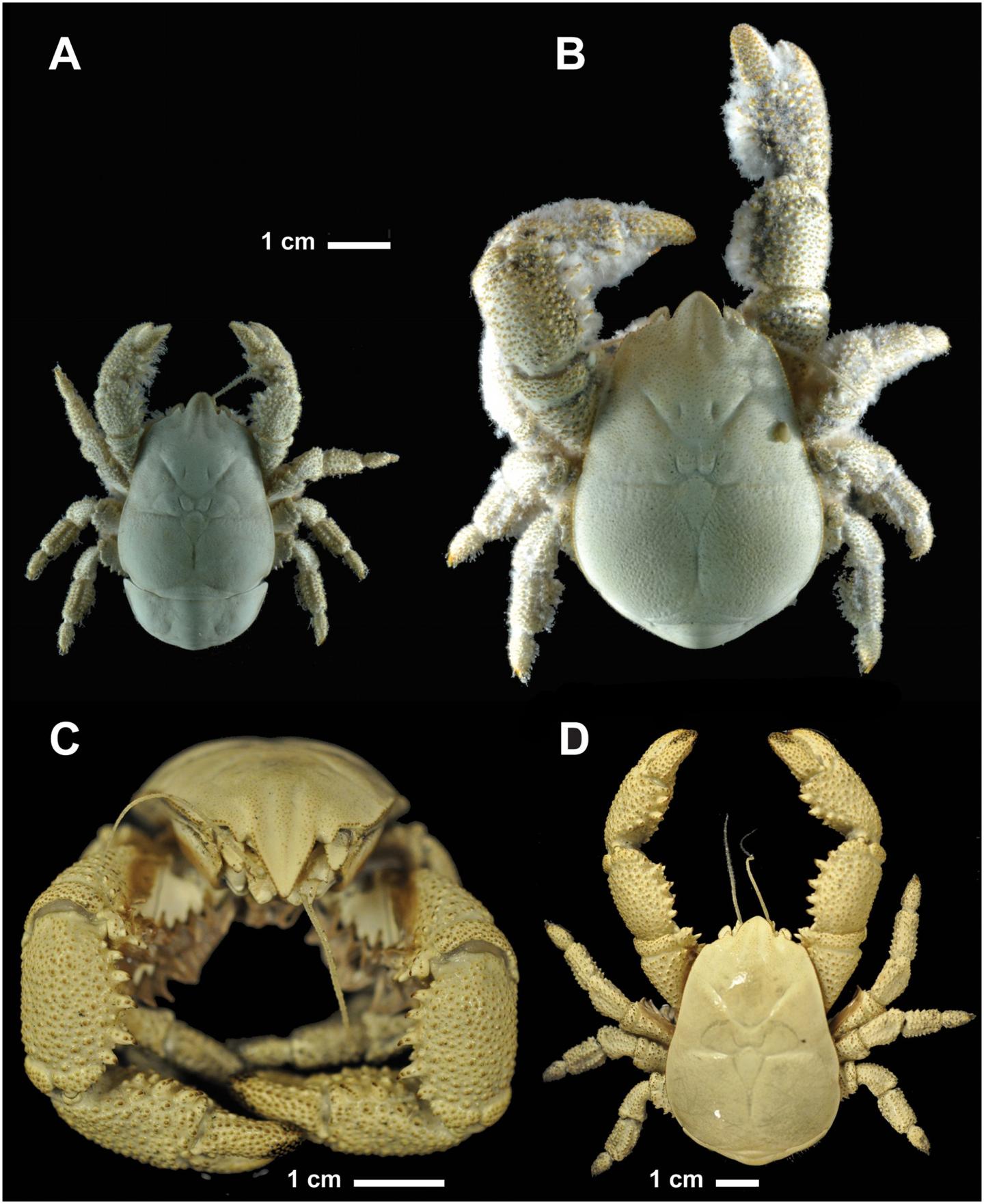The first species of Yeti Crab from hydrothermal vent systems of the East Scotia Ridge in the Southern Ocean, Antarctica, has been described in a study by Sven Thatje from University of Southampton, and colleagues.
The species of Yeti crab Kiwa tyleri belongs to an enigmatic group of squat lobsters, known as Kiwaidae, that thrive in the hot waters surrounding the geothermally heated hydrothermal vents. It is the dominant species at these sites, occurring at extremely high densities exceeding 700 specimens per square meter.
This Yeti Crab is famous for its body, which is densely covered by bristles, known as setae, and bacteria, giving it a fur-like outer appearance. This appearance is advantageous as it allows the crab to harvest the dense bacterial mats that overgrow the surfaces of vent chimneys, which it depends on for food from chemosynthetic bacteria.

Courtesy of Thatje et al.
For most of its life, Kiwa tyleri is trapped within the warm water environment of the vent chimney and is unable move between vent sites due to the nearly freezing water in between. Females carrying eggs only move away from vent chimneys, and into the surrounding polar deep-sea, in order to release their larvae; these would, otherwise, not survive the warmer temperatures of the adult habitat.
Crabs and lobsters, which are a characteristic of the global oceans, show an extremely low species number in polar seas. Hydrothermal vent systems found in the Southern Ocean do present a unique warm-water refuge to Yeti Crabs.
Thatje says: 'The Antarctic Yeti Crab is trapped in its warm-water hydrothermal vent site by the cold polar waters of the surrounding deep-sea. The species has adapted to this very limited sized habitat -- of a few cubique metres in volume -- by occurring in highly-packed densities and by relying on bacteria they grow on their fur-like setae for nutrition.'
Citation: Thatje S, Marsh L, Roterman CN, Mavrogordato MN, Linse K (2015) Adaptations to Hydrothermal Vent Life in Kiwa tyleri, a New Species of Yeti Crab from the East Scotia Ridge, Antarctica. PLoS ONE 10(6): e0127621. doi:10.1371/journal. pone.0127621





Comments